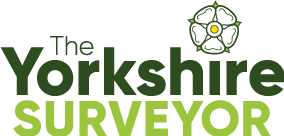
Located in the county of North Yorkshire close to the North Yorkshire Moors National Park the borough has a population of over 61,000 people. The main road link to Scarborough is the A64. And there are railway links to the rest of the rail network.
Traditional houses were two and three storey Victorian and Edwardian terraced houses. Scarborough also has many four and five storey terraced houses which were used to cater for the holiday visitors as guest houses. Solid, brick built, and now, often modernised with double glazing and central heating, many of these larger terraced houses have been divided into flats, or are used as houses in multiple occupation. There are often issues with noise transfer through the party walls and they can be difficult to insulate. Despite the age and styles of properties, the main components used in construction can often be accessed and examined by a skilled surveyor and any defects noted
Typical terraced housing in Scarborough
Scarborough Borough Council, like many other local authorities across the country was keen to ensure its citizens had decent, affordable housing. It embraced the concept of non-traditional building methods that emerged after the First World War, and continued accepting the plethora of new, non- traditional building methods after the Second World War building.
Non-traditional building methods often involves hanging a building envelope off a steel, concrete, or timber frame, or using precast concrete sections connected together to form the building structure. They were quick to build, cheap to produce, and used the latest methods of industrialised construction. Most of these systems were developed from the 1950’s to the 1970’s to provide long term housing solutions, with a few being classed as temporary accommodation. The Building Research Establishment (BRE) lists over 500 different types of non-traditional building types developed between 1919 and 1976, with some being specific to particular areas. Identifying and undertaking a survey on this type of building can be difficult, especially as many of the types have been re-cladded, upgraded, or modernised which disguises the original construction method. Modernisation and recladding can often hide latent defects in the frame and original structure. Some of the types identified in Leeds include Airey’s, British Iron and Steel Federation houses, Wimpey No Fines, Orlit, and Livett-Cartwright.
Examples of thermal cladding disguising the original structure
Some of the latent defects in non-traditional buildings that have been identified by the BRE include corrosion in the steel stanchions in some steel framed houses, failure of the sealant/baffles in large panel systems, carbonation of concrete cladding resulting in cracking, spalling and exposure of steel reinforcement, excessive condensation and cold bridging, and components no longer being manufactures for particular house types leading to inappropriate repairs, (E.g. Cladding panels being out of production). While some of these would be obvious to a skilled surveyor, frame defects cannot be identified without destructive testing.
Our surveyors keep this in perspective. Non-traditional construction methods have generally performed well over the years. It is worth bearing in mind that the much vaunted traditional method of brick cavity construction has only been widely used since the 1930’s and that some of the non-traditional methods are older. This reassurance by the BRE that non-traditional construction methods are actually OK has not prevented mortgage lenders from being reluctant to lend on these property types, even though a traditional built house may have structural movement.
Housing estates continue to be built today. Eastfield is one of the larger estates in Scarborough. It is largely low rise houses and flats and is a popular residential area. As the demand for housing shows no sign of slowing down, more new developments should be expected. Middle Deepdale, near the Eastfield estate is currently being developed and will provide much needed housing for the growing population.
So, what to do if you are unsure about what you are buying?
Charters Reid Surveyors have a wealth of experience in surveying all building types including non-traditional building methods, and flat conversions. We can offer peace of mind Home Movers Reports, more detailed Building Surveys, investigate specific defects, provide fire risk assessments, provide house in multiple occupation surveys, and much more. We will always provide a comprehensive and professional service and after sales service. More details about surveys and how to contact us can be found at www.scarboroughsurveyor.co.uk or by giving the friendly team a call on 01723 371466 or 01904 468881.
